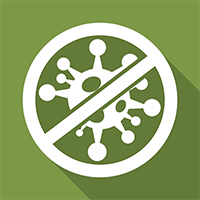CPD Approved
Course Description
When introducing epilepsy, we must first recognise that there are around 40 different types of seizures. Statistics show that one in five people will have a seizure at some time in their life although only some of these will be caused by epilepsy. Epilepsy is a neurological condition that affects the brain and the nervous system and is covered by the Equality Act 2010. The condition can affect people for only a portion of their life, or it can be lifelong. Because of the varied nature of the condition an awareness of epilepsy and the actions you can take if you are present during a seizure is incredibly useful for those who work in health and social care. This course will give you an overview of epilepsy. It lists the methods of diagnosis, what a seizure is and how the brain can be affected. It will introduce some possible seizure triggers and describe what to do when someone has a seizure. It will also discuss some of the treatments offered to people with epilepsy and provide practical advice on what you can do if you witness someone having a seizure
Target Audience
This course is aimed primarily at people working in the care sector with children or adults however anyone who would like to expand their knowledge or understand what to do if they see someone have a seizure should take this course. This course is also a great one to do alongside first aid training as it expands on the information relating to seizures that is usually taught as part of first aid.
Advantages
Having a knowledge of Epilepsy and the different types of seizure and the actions you can take if you are present during a seizure will allow you to take a proactive role in ensuring the person is kept safe and as comfortable as possible. CPD approval means that this course can be used by those that need to prove they are continually developing themselves. Online training is flexible, efficient and cost effective meaning the candidate can progress through the modules at their own pace and in their own time, so they can fit the training in around their work and personal life.
Further Progression
If you would like to further your skills and be prepared for situations that might require a fist line response, then our Emergency First aid in the workplace or Paediatric First Aid courses are both great next steps from this one. For those people that have already completed First Aid training then another course that can complement your knowledge is Diabetes Awareness.
Recommended System Requirements
• Browser: Up to date web browser
• Video: Up to date video drivers
• Memory: 1Gb+ RAM
• Download Speed: Broadband (3Mb+)
Duration: 30 minutes (Note: This is based on the amount of video content shown and is rounded off.
It does not account in any way for loading time or thinking time on the questions).











